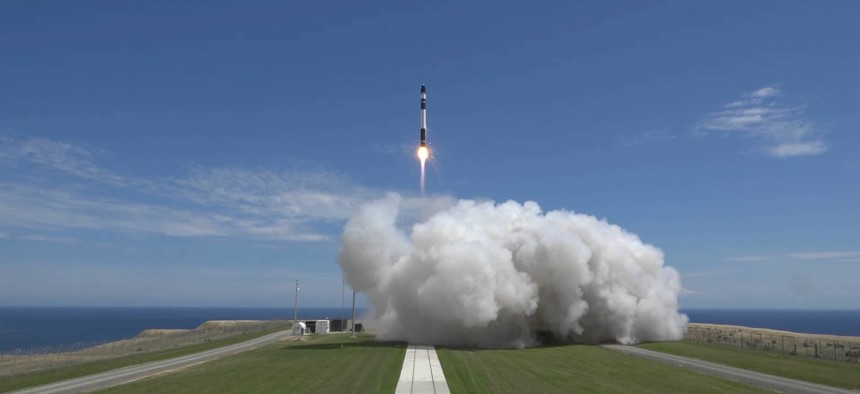
A Rocket Lab Electron booster lifts off from the company's Māhia Peninsula launch site in New Zealand on Jan. 21, 2018. The Electron rocket carried three small satellites into orbit for Rocket Lab customers. Photo via Rocket Lab
The Cost To Put a Microsatellite Constellation Into Space Just Fell Through the Floor
Super-cheap rocket startup hits orbit in new test, demonstrates space maneuvering to deposit satellites.
Want your own microsatellite constellation? The prospect just became much more realistic. Rocket Lab, a space startup out of California and New Zealand, announced two important firsts in the past week: getting their experimental rocket into orbit on its second attempt and more precise deployment of microsatellites thanks to a novel secondary burn capability.That suggests that future minisatellites will get much cheaper to launch.
In the private space race, Rocket Lab isn’t as well known as some of its flashier competitors, such as SpaceX. But if they can meet their goal of putting payloads into low earth orbit at a cost of $5 million, they’ll be re far cheaper than Elon Musk’s outfit, which charges an average of $62 million per launch.
Right after the group’s successful launch of their Electron rocket, they maneuvered the rocket in space by reigniting the main engines for a second burn. This “kick stage capability” would allow the rocket to deposit its satellite payloads far more precisely, and in slightly different orbits.
“The kick stage releases small satellites from the constricting parameters of primary payload orbits and enables them to full reach [sic] their potential, including faster deployment of small satellite constellations and better positioning for Earth imaging,” said Rocket Lab founder Peter Beck in a statement.
The Electron rocket can carry 150 kilograms, a tiny fraction of SpaceX’s 22,800 kilograms. And SpaceX has also demonstrated a secondary burn capability. But as earth imaging satellites get smaller, relying more and more on algorithms and computing power for image rendering and less on big, carefully-positioned glass lenses and scopes, the size and price for some imaging satellites, as well as many other simple kinds of tracking sats, is going down. That means more groups will be able to consider launching their own satellite constellation.
The role of microsatellites and even smaller nanosatellites (under 10 kilograms) in space image capture and object tracking is increasing. The market for micro and nanosatellite launches has grown an average of 40 percent per year since 2011. And there’s a growing backlog of small and nanosatellites awaiting launch, according to consulting firm Space Works. A 2016 white paper from the firm saw the need for micro and nanosatellite launches growing much faster than the market for heavier objects.
